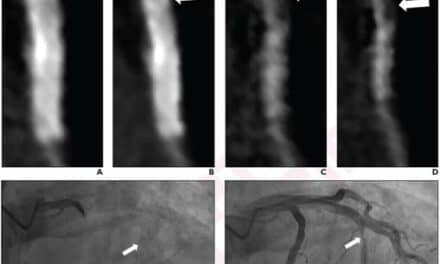Radiologic technologists play the central role in the injection of contrast media for enhanced CT examinations. Their responsibilities include the operation of the power injector, a crucial piece of equipment used to manage an array of different contrast techniques. The volume of CT examinations at most institutions has soared in recent years as indications for CT have expanded and the time needed to perform the average examination has decreased. This places an extraordinary demand on technologists to improve their efficiency constantly. The recent introduction of prefilled syringes of contrast media offers one way to increase technologists’ efficiency while improving their job satisfaction.
In conjunction with a time-and-motion analysis of contrast-enhanced CT examinations, an opinion survey was administered to the practicing radiologic technologists participating in the study at Duke University Medical Center, Durham, NC; Massachusetts General HospitalWest Imaging, Waltham, Mass; MD Anderson Cancer Center, Houston; and Charleston Area Medical CenterGeneral Division, Charleston, W Va. The survey was designed to capture their comments, opinions, and preferences regarding the two contrast injection methods. Surveys were completed in a blinded manner and were administered by the study monitors at the end of the project.
TECHNOLOGIST EXPERIENCE
There were 29 technologists who participated in the survey. The technologists had an average of more than 14 years’ work experience, and 93% had more than 2 years’ experience. None of the institutions involved used prefilled syringes as their principal contrast injection method. Consequently, 15 technologists (51.7%) felt that they had minimal experience with prefilled syringes. Eight (27.6%) felt that they had moderate experience, and six (20.7%) felt that they had extensive experience. Seventeen technologists (60.7%) had used a prefilled syringe 10 or fewer times, while five (17.8%) had used prefilled syringes more than 10 times, but fewer than 20 times. Six (21.4%) had used prefilled syringes more than 20 times, and two technologists reported extensive experience, one with 12,600 injections and one with 6,000. The average number of injections per technologist was 674; however, after removing the two technologists with extensive experience, the adjusted average dropped to 11.
TECHNOLOGIST ESTIMATES
Technologists reported that it took an average of 118 seconds to load the injector, giving a value that was very close to that found during the time-motion study. Fifty-nine percent (17) thought it took more than 2 minutes to load the contrast and 27% (8) thought it took less than 1 minute. Sixty-five percent of technologists thought they could perform more than 15 contrast injections using bottle-filled cartridges or prefilled syringes in an 8-hour shift. The average response indicated that technologists could perform nearly one more procedure per 8-hour shift when using a prefilled syringe.
When rating prefilled syringes and bottle-filled cartridges overall, technologists expressed a strong preference for prefilled syringes, with a mean score of 5.9 versus 4.8 on a 7-point scale. Eighty-nine percent (25) indicated that they were satisfied with prefilled syringes and 64% (18) were very or extremely satisfied. Approximately 71% (20) indicated that they were satisfied with bottle-filled cartridges, 25% (7) were very satisfied, and 11% (3) were somewhat or very dissatisfied.
On the same 7-point scale, technologists rated prefilled syringes superior to bottle-filled cartridges in risk of contamination (6.6 versus 3.9), speed (6.1 versus 4.4), patient safety (6.1 versus 4.1), convenience (5.9 versus 4.4), waste disposal (5.8 versus 4.1), and technologist safety (5.7 versus 4.4). Technologists preferred prefilled syringes in every category: convenience, ease of waste disposal, patient safety, technologist safety, efficiency, speed, and risk of contamination (Figures 1 and 2).
 Figure 1 Technologist ratings of prefilled syringes versus bottle-filled cartridges. 1=extremely dissatisfied, 2=very dissatisfied, 3=somewhat dissatisfied, 4=neutral, 5=somewhat satisfied, 6=very satisfied, and 7=extremely satisfied. Figure 1 Technologist ratings of prefilled syringes versus bottle-filled cartridges. 1=extremely dissatisfied, 2=very dissatisfied, 3=somewhat dissatisfied, 4=neutral, 5=somewhat satisfied, 6=very satisfied, and 7=extremely satisfied. |
In this group of technologists, the mean job satisfaction score of 5.9 on a 7-point scale suggests overall contentment. Technologists did not report any substantial difference in stress levels over the past two years. The use of prefilled syringes, however, was reported to increase satisfaction. On a scale of 5, prefilled syringes scored 3.6 as a reason for improved job satisfaction. In these times of difficult technologist retention, an improved work environment related to prefilled syringes could be important. The enthusiasm of technologists for prefilled syringes was exhibited in a recent survey of 14,000 CT-certified radiologic technologists by the American Society of Radiologic Technologists .1 Prefilled syringes were clearly preferred by 93% of their users, and even 58% of nonusers favored them.
 Figure 2 Technologist preference for prefilled syringes versus bottle-filled cartridges (1=bottle-filled cartridges, 5=prefilled syringes). Figure 2 Technologist preference for prefilled syringes versus bottle-filled cartridges (1=bottle-filled cartridges, 5=prefilled syringes). |
David S. Enterline, MD, is assistant professor of radiology, Duke University Medical Center, Durham, NC. The work described in this article was funded, in part, by an educational grant from Bracco Diagnostics Inc.
References:
- Femano PA. The Use of Prefilled Syringes in CT Contrast Administration: A Research Report. Albuquerque, NM: American Society of Radiologic Technologists; 2001.




